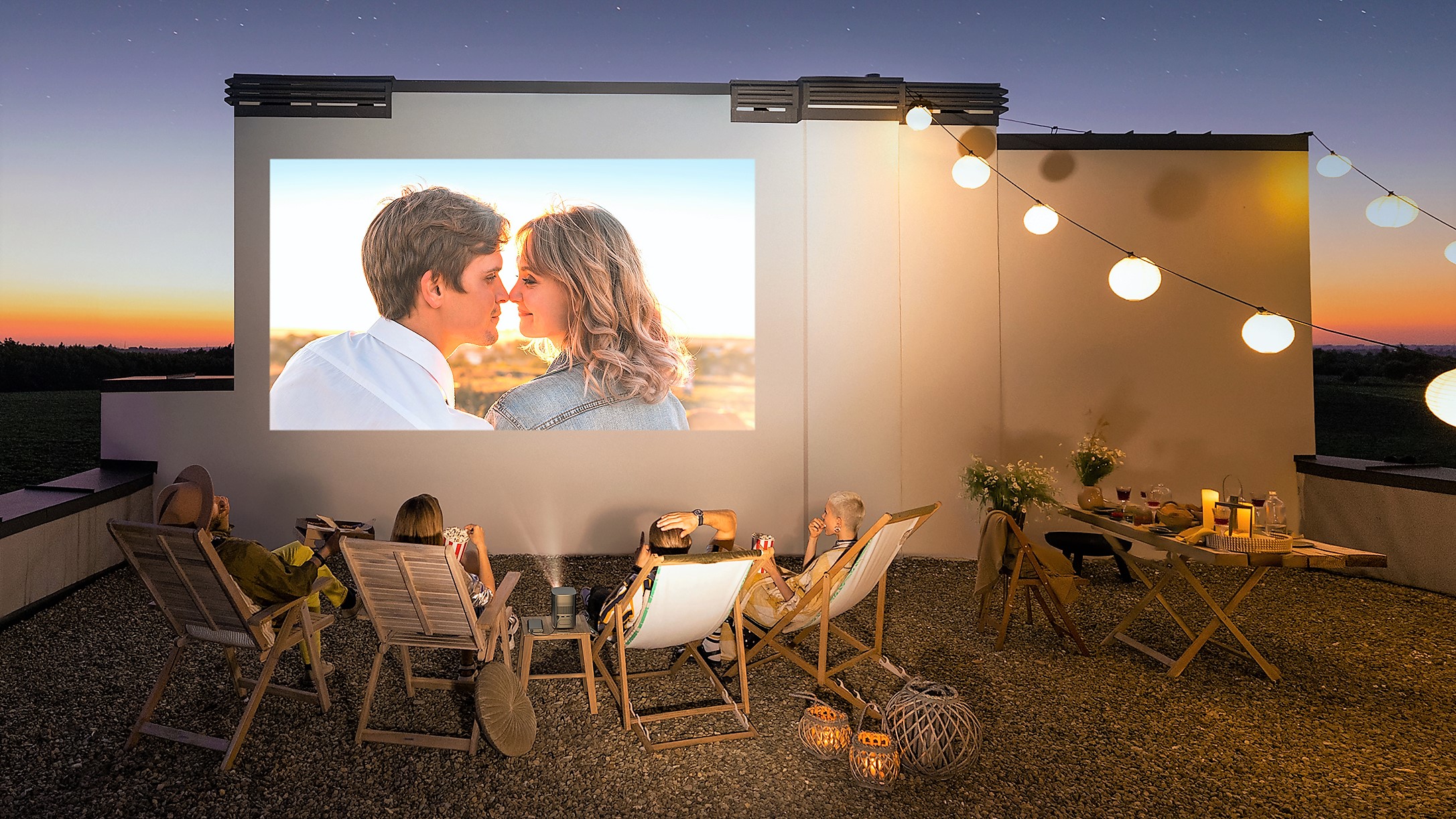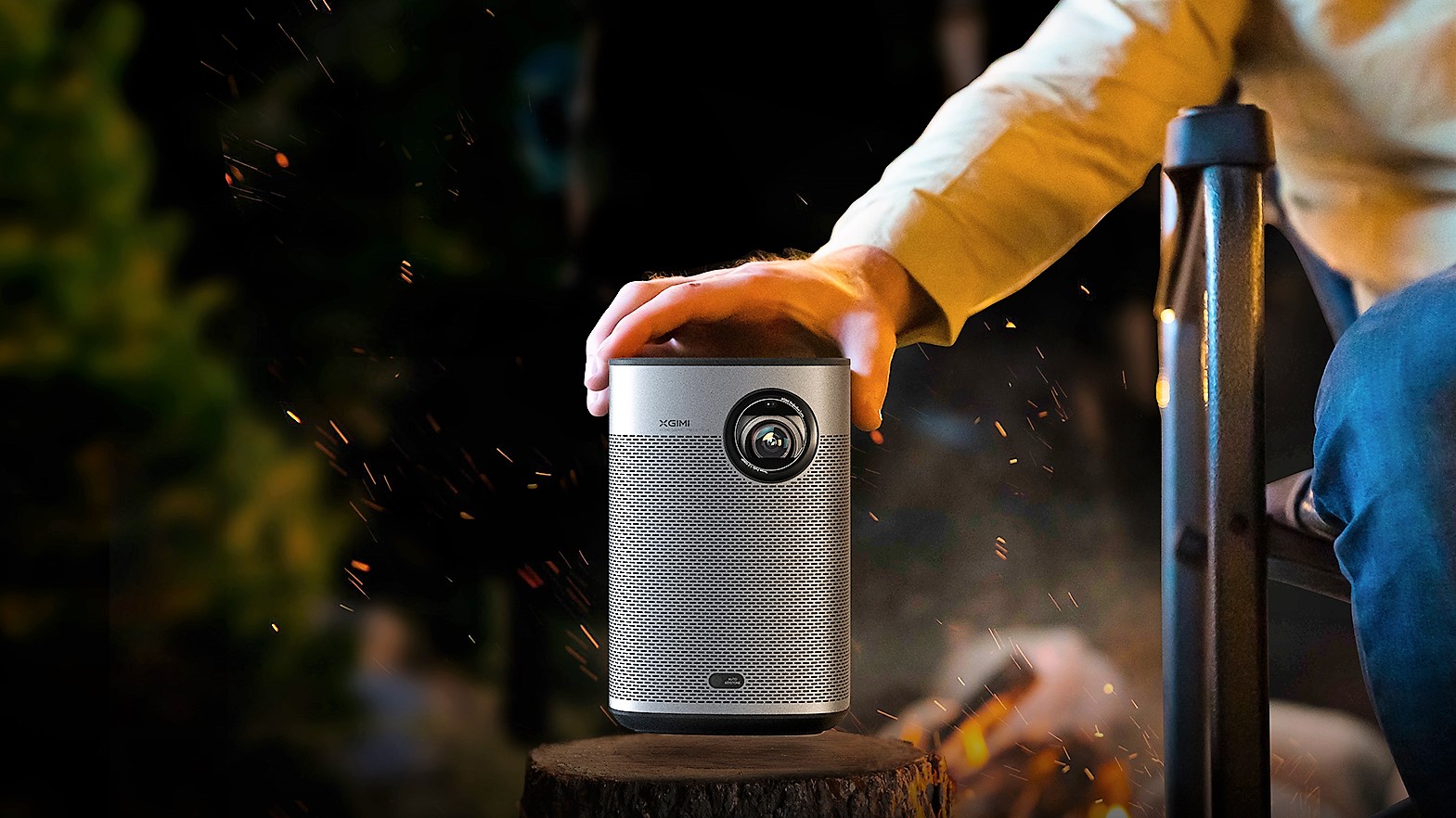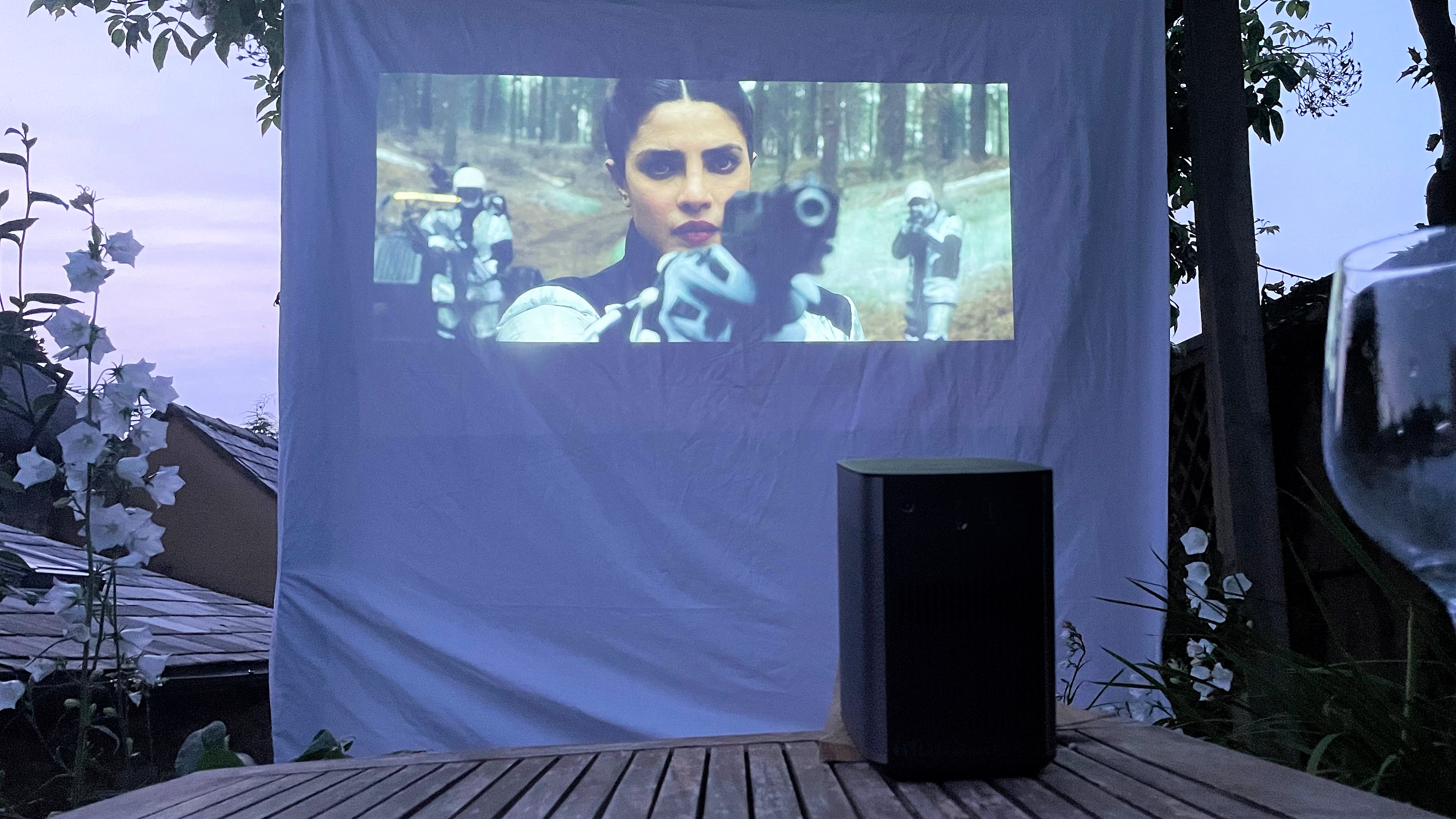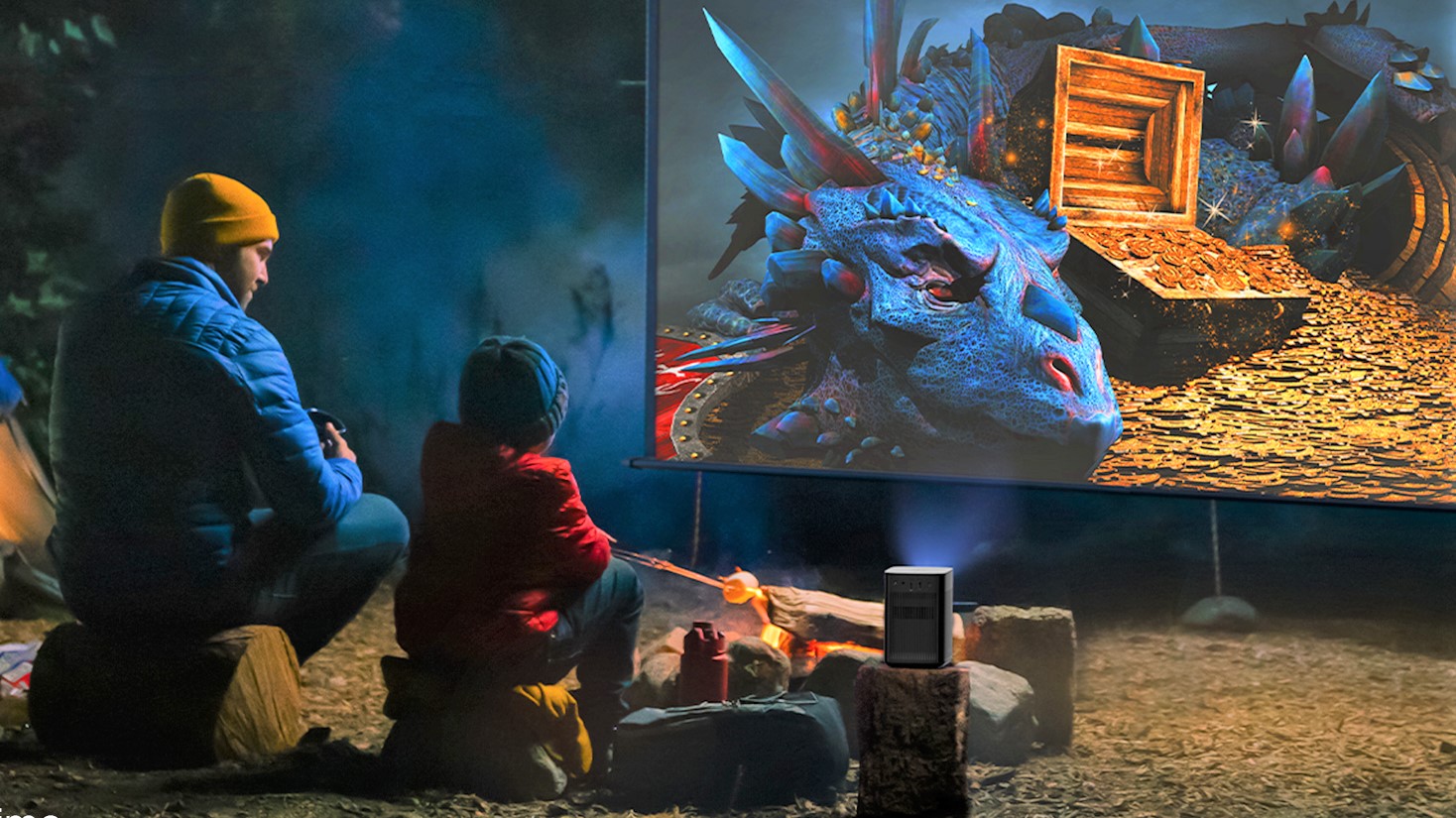This portable projector made my outdoor movie night — here's what happened
The XGIMI Halo+ portable projector turned out to be the ultimate home theater movie experience for my backyard.

The best TV screens are capable of creating big-screen images in the comfort of your living room, but even the best 75-inch TVs can't match the image sizes for a true cinematic feel quite like a projector.
Once the domain of professional installers and serious home theater enthusiasts, today there are all sorts of projectors with sufficiently bright images for most indoor and outdoor movie occasions, and have the kind of smart technology to make them easy to set up anywhere.
I jumped at the opportunity to relive the open-air experience and recreate a movie night under the stars in my own backyard.
There's nothing quite like watching a movie on a projected screen, and I love going to the cinema and seeing big cinematic presentations fill my field of vision. While using a projector at home can take a little more patience to set up than a conventional TV, when done right a projector can make any space feel like a movie theater.
In fact, I've often considered ditching my 50-inch flatscreen TV for a discreet projector setup in my lounge, but there are certain practicalities that I'd need to consider before committing to a projection system as my main TV screen. And as luck would have it, I recently got to experiment with a remarkable portable solution when the XGIMI Halo+ portable projector ($849, Amazon) arrived for testing.
A neat way to watch movies under the stars

My first outdoor movie experience was more than 20 years ago at the world's longest-running outdoor movie theater in Broome, Western Australia, but it was a cinematic highlight that has stayed with me ever since. So, when I got the opportunity to try out the XGIMI Halo+ portable projector at home, I jumped at the opportunity to relive the open air experience and recreate a movie night under the stars in my own backyard.
I've had some experience with home projectors in the past, but that was with larger home models designed to deliver big screen images when physically connected to a video playback source. Never did I envisage a time where I'd be able to watch movies wirelessly on a portable projector in my own yard, but the XGIMI Halo+ portable projector ($849 / £749 / AU$1,281) allowed me to do just that.
Although XGIMI is a name that's new to me, the Chinese-based company has a strong lineup of home and portable projectors. Marketed by XGIMI as "the projector that lets you go places", the Halo+ is a remarkably compact unit measuring 4.48 x 5.7 x 6.7 inches (114 × 145 × 172mm) and weighing 3.53 pounds (1.6kg). It claims to deliver around 2.5 hours of movie streaming from the built-in battery pack, but this varies on how it's being used.
A great outdoor projector when the weather is right

I live in the U.K. where the summer weather has been typically unpredictable throughout June. That being the case, and the lack of any IP rating confirming the level of waterproofing for the Halo+, it's taken several weeks to get the right conditions after sunset for watching a movie outside without the risk of being caught out by a sudden downpour.
Never did I envisage a time where I'd be able to watch movies wirelessly on a portable projector in my own yard, but the XGIMI Halo+ enabled me to do just that.
The reason for waiting until after sundown is that although the Halo+ is rated at 900 ANSI Lumens, that's when it's connected to a power outlet. When running from its built-in battery, it appears to drop brightness levels significantly, and getting a bright image on the white sheet I'd managed to stretch between two wooden pergola posts supporting a climbing rose at the end of my yard didn't get sufficiently bright enough until the sun's afterglow had dipped well below the horizon.
Admittedly, my screen arrangement didn't look the neatest during daylight hours, but that really didn't matter once the sun went down and my makeshift setup was very effective. If you do want a more professional-looking setup that takes just a minute or two to install, GT Getco Tech makes a great value projection screen with a stand that's priced at $86 at Amazon.
Impressive images and better sound than I expected

The Halo+ projector's 1.2:1 throw ratio gave more flexibility than I imagined when setting it up in my backyard, and the specs say it can cast screen sizes of between 5 and 10 feet (60 and 120 inches). And to get the angle just right, XGIMI has introduced a multi-angle stand that can be purchased for $79 at Amazon.
Things have clearly moved on considerably in the world of projectors since the last time I tried one out at home. Before setting up in the yard, I had a trial run indoors to familiarize myself with the set up procedure once the sun went down and I moved the projector into position outside.
Intelligent Screen Alignment and Auto Keystone Correction were a boon for getting the image aligned correctly during my trials. XGIMI's slick user interface (UI) had me set up in next to no time, and I was able to access content from Amazon Prime and Netflix streaming platforms with ease thanks to Android TV and Google Play to download and install my favorite TV streaming apps.
Images were remarkably clean and vibrant, with barely any noticeable latency between picture and sound even though I was streaming movie content wirelessly from a router inside my house. With the built-in speakers and sound output made by Harman Kardon, the outdoor sound was clear and authoritative and surprisingly powerful in the open air space.
While my own outside cinematic setup wasn't as charming as my first encounter all those years ago, it certainly conjured up all the feels of that time. And with Glastonbury Festival in full swing this weekend, I'm looking forward to recreating all the outdoor music festival feels without actually needing to travel there; watching all the headline acts from the comfort of a perfectly positioned yard recliner in my own backyard in the open air.
More from Tom's Guide
Sign up to get the BEST of Tom's Guide direct to your inbox.
Get instant access to breaking news, the hottest reviews, great deals and helpful tips.

After 2.5 years as Tom's Guide's audio editor, Lee has joined the passionate audio experts at audiograde.uk where he writes about luxury audio and Hi-Fi. As a former editor of the U.K.'s Hi-Fi Choice magazine, Lee is passionate about all kinds of audio tech and has been providing sound advice to enable consumers to make informed buying decisions since he joined Which? magazine as a product tester in the 1990s. Lee covers all things audio for Tom's Guide, including headphones, wireless speakers and soundbars and loves to connect and share the mindfulness benefits that listening to music in the very best quality can bring.
